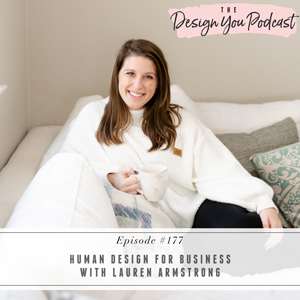
You know me, friends, I sometimes bring a little woo to the show, and I am so excited to bring an episode to you today that might just make the rest of this year very different for you. Today’s guest helps coaches and course creators unapologetically step into their purpose by leveraging the power of their unique human design.
Lauren Armstrong is a certified Human Design consultant, speaker, subconscious transformation practitioner, and energy healer. She uses human design to help entrepreneurs build a business that is the fullest expression of themselves and what they’re meant to do in the world, and joins me this week to break down human design in an easy-to-understand way.
Join us this week and hear what human design is and how Lauren uses it to help people build their businesses. Hear the five types of Human Design and find out what type you are, and understand how aligning with your design can completely change your life.
If you want help creating a business with thriving revenue streams so that you can design the life you really want this year, now is your chance! The doors to the Design You Coaching Program are officially OPEN! With this round, we are launching a whole new course where I share my complete design system with you. You’ll receive every template, tool, SOP, worksheet, downloadable, video, and more that I have created and used myself, and receive a complete step-by-step for how to run your full-service projects. You do not want to miss this, sign up now!





